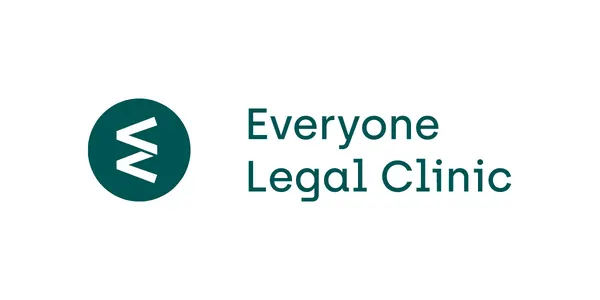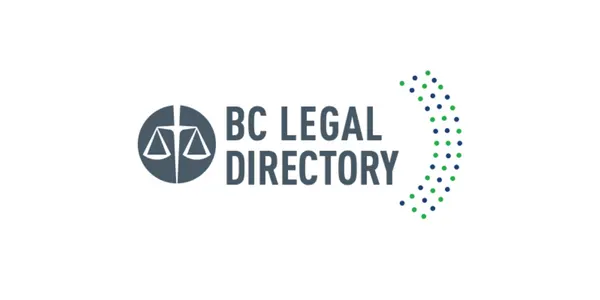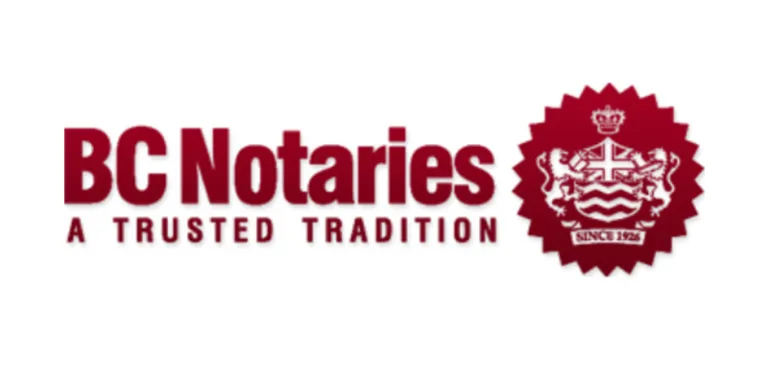
When a loved one dies, they leave behind their property and debts. These must be dealt with. A grant of administration is similar to probate. It’s a document issued by the court, giving the person named as administrator the legal authority to settle the estate. Learn when you need to apply for a grant of administration, and how to do it.
What you should know
When someone dies, their property must be dealt with. Ideally, the person named in the deceased’s will as executor can do this. But sometimes this isn’t possible. Consider the following scenarios:
The deceased had a will, and they named an executor in it. But it turns out this person doesn’t want (or can’t do) the job. Here, someone may need to apply to court for a grant of administration with will annexed.
The deceased didn’t have a will. (So they never chose an executor.) Someone may need to apply to court for a grant of administration without will annexed.
The deceased had a will, but the court says it’s not valid. (Because, for example, the deceased seems to have been pressured into signing it.) Someone may need to apply to court for a grant of administration without will annexed.
Basically, paperwork. Various documents are filed with a probate registry. Registries are the official record keepers for the Supreme Court of BC.
If everything’s in order, the court issues a grant of administration. The administrator named in this document has the legal authority to settle the deceased’s estate. This can include paying debts, selling assets, and distributing property. The administrator can show the grant to anyone who holds assets of the estate (such as banks).
The people who can apply for a grant of administration are listed under the law in order of priority. You can only apply if no one above you wants the job. The order of priority depends on what type of administration application is being made.
If there’s no valid will
“My best friend Mara died without a family of her own, or any siblings. She left me 60% of her estate. The remaining 40% is to be split between 10 of her cousins, and adult nieces and nephews. I want to apply to administer the estate. The other 10 beneficiaries don’t want me as administrator — they want to keep it in the family. But even though I’m just one beneficiary, I hold the majority interest in the estate (more than 50%). I have more say than the others. I have first priority as administrator.”
– Sophia, Vancouver, BC

The law sets out who can apply for a grant of administration without will annexed. From the top:
The spouse of the deceased or someone nominated by them.
An adult child of the deceased, with the consent of the majority of the deceased’s children.
A person nominated by a child of the deceased. That person must have the consent of the majority of the deceased’s children.
An adult child of the deceased without the consent of the majority of the deceased’s children.
If there are no adult children, any other heir (that is, someone who’s entitled to a share of the estate) may apply. Priority goes to an heir who’s the consensus pick of the heirs that have the majority interest in the estate. Next, priority goes to someone nominated by those heirs. Otherwise, any heir can apply.
Anyone else. This may include a friend of the deceased, or a professional such as a lawyer or accountant. The Public Guardian and Trustee might also apply to administer the estate, if no one else is willing to do it.
If there’s a valid will, but the executor won’t be acting
The law sets out who can apply for a grant of administration with will annexed. Again, by order of priority:
A beneficiary under the will who’s the consensus pick of the other beneficiaries who have a majority interest in the estate.
Someone nominated by a beneficiary. They must have the consent of the beneficiaries who have a majority interest in the estate.
A beneficiary who doesn’t have the consent of the beneficiaries with a majority interest in the estate.
Lastly, any other person, including the Public Guardian and Trustee, with consent.
Get the consent of others who may apply
If you’re thinking of applying for administration, check that everyone who has equal or higher priority than you is okay with you throwing your hat in. It’s a good idea to get their written agreement to your application. If the deceased died after March 31, 2014 (when new law was introduced), these consents aren’t required by law. But it’s good practice to file them with your court application.
If the estate assets are worth less than $25,000, you typically don’t have to apply for a grant of administration. It’s up to the institutions that hold the assets whether they’ll transfer them to you without one. Check with them and see.
A grant isn’t required for assets that pass outside of the will
A grant of administration is only required for estate assets. Not all things owned by the deceased form part of the estate. Certain types of assets pass outside the will. This means you can transfer them to someone without a grant (though you’ll still need a copy of the death certificate). Typical examples include:
Assets held in joint tenancy. Examples include a joint bank account or a home owned in joint tenancy. This is a way that property can be owned. Usually, when a joint tenant passes away, the other owner(s) automatically get their share.
Assets with a designated beneficiary. The deceased may have named someone as a “designated beneficiary” of a particular asset. (That means the deceased chose this person to directly inherit the asset — usually money.) Examples include a life insurance policy or a registered retirement plan.
Many couples hold all their assets through joint ownership or with beneficiary designations, partly to avoid going to court for probate.
If the deceased owned land
As the administrator, you’ll need to transfer the land to someone else (either by selling or to a beneficiary or heir). If the deceased owned land other than in joint tenancy, you’ll need to apply for a grant of administration. This is true even if the deceased’s interest in the land is less than the $25,000 threshold.
Check the state of title certificate
If you’re wondering whether the deceased held land in joint tenancy, you can look at the state of title certificate. Under the law, the transfer document and title must state that the land is held in joint tenancy, otherwise it becomes a tenancy-in-common.
You’ll need to sign some of the application forms in front of a lawyer, notary public, or a commissioner for taking affidavits. All court registries have such a commissioner, and some community groups do as well.
When you sign a document in front of them, it means you’re swearing that the information in the document is true.
To file the administration application, you must pay a court filing fee of $200.
You may also have to pay the court probate fees. Probate fees are based on the gross value of the estate assets. (That is, the value of the estate assets before debts.)
Fees are calculated based on a formula. For details, see below under step 4 of applying for a grant of administration.
There are no court fees for small estates
If the estate has a value of less than $25,000, there are no court filing or probate fees.
You may have to pay a bond to the court
If you’re applying for a grant of administration, you may have to deposit money with the court. This is called a bond. The bond ensures you’re doing your work honestly and competently.
The court may tell you to pay a bond if there’s a beneficiary or heir who is:
a child under 19
an adult who is mentally incapable, and doesn’t have a nominee (this is someone who’s responsible for the adult’s financial affairs, such as an attorney under a power of attorney)
If required, you’ll need to pay the bond before the court will issue you a grant of administration. Bonding companies may ask you to pay a bonding premium and other fees. These can be charged to the estate when you do your final accounting.
The time frame for the probate registry to review and approve administration applications can vary considerably. Generally the process takes two to three months, but it will depend on the volume of applications and staffing levels at the probate registry.
If your application is rejected, the probate registry will tell you the reason. You can then correct the problem and re-apply.
Apply for a grant of administration
“Mom died without a will. She and Dad divorced a while ago and she never found another partner. She had three kids, including me. When I applied for administration, I was confused about whether to give notice to my mom’s sister. My lawyer explained that only me and my siblings were entitled to the estate under the law. So I didn’t have to send notice to my aunt."
– Dion, Pender Island, BC

You must notify certain people that you intend to apply for a grant of administration. To do so, complete the court form P1, notice of proposed application (available here).
If the deceased left a will
Together with a copy of the will, mail or deliver the completed form P1 to:
each person named in the will as executor or alternate executor,
each beneficiary named in the will (there’s no minimum threshold; if someone will or may receive any amount of money or property under the will, you must give that person notice),
the deceased’s spouse and children (because they’re entitled to challenge the will), and
each person who would be entitled to a share in the estate if there had been no will.
If the deceased didn’t have a will
Mail or deliver the completed form P1 to:
each person who’s entitled to a share in the estate (or would have been if the spouse hadn’t received a share), and
if the deceased left debts behind, each creditor whose claim exceeds $10,000.
For all applications
Whether or not the deceased had a will, you must also deliver notice to:
anyone who’s served a citation to you in relation to the deceased (such as a citation requiring you to apply for probate),
if the deceased was a Nisga'a citizen, the Nisga'a Lisims government,
if the deceased was a member of a treaty First Nation, the treaty First Nation, and
if any of the people you need to notify is a mentally incapable adult, the Public Guardian and Trustee, as well as the adult's nominee (such as an attorney under a power of attorney)
if any of the people you need to notify is a minor, the minor's guardian(s), and in some situations, the Public Guardian and Trustee
Timing of delivering notice
You must deliver the P1 notice at least 21 days before submitting the grant application to court. This gives people the chance to dispute your application.
Downloading administration forms
You can download the required forms (called probate forms) from the BC government website. If a form doesn’t open on your computer, try saving it to your computer and opening it with Adobe Acrobat.
You need to prepare several documents. A typical administration application will include these documents:
Submission for estate grant, in court form P2. This form gives details about your application for administration.
Affidavit of the applicant, in court form P3 , P4, or P5. This form identifies you and your relationship to the deceased. If there’s a will, use form P3 or P4. If there’s no will, use form P5. If you’re using form P5, you must swear that you made a diligent search for the will. The law requires you to search in all places that could reasonably be considered a place where a testamentary document may be found.
Affidavits of delivery, in court form P9. Together, these confirm that notice of the application was delivered to everyone required.
Affidavit of assets and liabilities, in court form P10 or P11. This form sets out all the deceased’s assets and liabilities that pass to you as administrator.
If there is one, the originally signed version of the will, or if the original does not exist, a copy of the will. You’ll also need to file evidence that supports that it’s a copy of the valid will. The court may or may not accept the copy.
Two copies of a certificate of wills search, and any accompanying wills searches. You can get these by doing a search of the wills registry.
Additional documents may be required. Examples include forms to deal with issues relating to the will (if there was one), dispensing with notice, or an executor renouncing their executorship.
Tips for filling out administration forms
If there’s nothing to list under one of the headings on a form, write nil or none. Blank spaces may suggest that information is missing. This is one of the main reasons forms are rejected.
We have more tips for filling out probate forms, where we walk you through the standard probate and administration forms and answer common questions about completing them.
File the application in a probate registry of the Supreme Court of BC. This must be done in person. It can’t be done by mail. To find the closest probate registry, you can contact Enquiry BC by calling 1-800-663-7867 (toll-free).
When you file the application, you’ll have to pay a court filing fee. The fee is currently $200. If the estate has a value of less than $25,000, you don’t have to pay this fee.
Once the application is reviewed, the probate registry will assess the probate fees you need to pay. These must be paid before the court will issue you a grant of administration.
The probate fees are based on the gross value of estate assets that were located in British Columbia when the deceased died. If the deceased was ordinarily resident in British Columbia immediately before they died, you’ll also need to pay probate fees on intangible (non-physical) assets located outside of the province, such as bank accounts or investments.
If the estate assets have a value over $25,000, fees are payable on the following basis.
| Estate value | Probate fees |
|---|---|
| $0 to $25,000 | 0 |
| $25,000 to $50,000 | $6 for every $1,000 (or part of $1,000) |
| $50,000 or more | $14 for every $1,000 (or part of $1,000) |
For example, if the gross value of the estate assets is $125,000, the probate fees will be $1,200:
$6 x 25 (for every $1,000 between $25,000 to $50,000) = $150
$14 x 75 (for every $1,000 between $50,000 to $125,000) = $1,050
= $1,200
These probate fees are in addition to the court filing fee of $200.
Once a grant of administration is issued, you can proceed with the remaining steps in administering the estate.
Who can help

Self-Counsel Press
Their probate kit can be helpful if you're applying for probate or administration without a lawyer's assistance.

Public Guardian and Trustee
A government office that can manage an estate, for a fee, when the executor is not able or willing to do so, or when someone dies without a will.

Law Society of BC
Their practice refresher course material includes a detailed walk through of applying for probate or administration.

Access Pro Bono's Free Legal Advice
Volunteer lawyers provide 30 minutes of free legal advice to people with low or modest income.

Access Pro Bono’s Everyone Legal Clinic
Clinicians provide affordable fixed-fee services on a range of everyday legal problems.

Lawyer Referral Service
Helps you connect with a lawyer for a complimentary 15-minute consult to see if you want to hire them.

BC Legal Directory
Search for a lawyer by community or legal issue. From the Canadian Bar Association, BC Branch.


